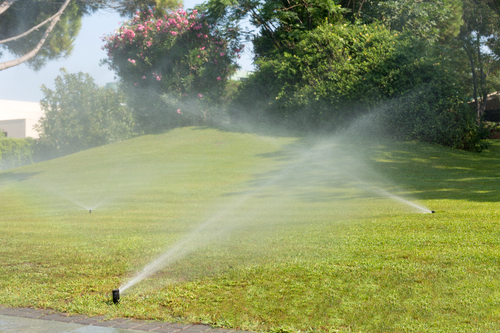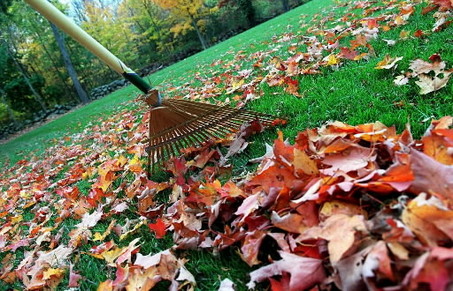Posts Tagged Lawn Maintenance
Irrigation 101: The Importance of a Good Sprinkler System Design
A good sprinkler system is one that satisfies your home’s landscape watering requirements, letting it flourish beautifully while saving large amounts of water and money. The benefits of investing in professional sprinkler system design are numerous:
- You no longer need to worry about watering at the proper times.
- Plants, tree, and ground covers get the right amount of water.
- Over and underwatering is virtually eliminated.
- A healthier landscape improves your home’s value.
Every sprinkler system we design is done with the xeriscape principles of promoting water conservation and reducing the need for regular maintenance in mind.
Plot and plan the perfect sprinkler system design

There’s a lot that goes into designing a good sprinkler system. Flow, working pressure, pipe sizing, water velocity, and friction loss must all be taken into consideration. There’s also valves, timers, and irrigation heads to think about. Add it all up, and it’s easy to see why having a pro handle it is a great idea!
Here’s a brief rundown on how a typical sprinkler system design plan comes together.
Measure and design
The first step in any sprinkler system design is measuring the property then plotting where fixed elements like your home, the driveway, paths, fences, patios, and decks are located. Next, current and future lawns, shrubs, ground covers, trees, and other plantings are added to the drawing. The landscape is then divided into areas such as front yard, back yard, side yard, shrub areas, lawn areas, and so on.
System design capacity
It’s not as complicated as it sounds. To design an automatic sprinkler system, you need to know how much water is available to irrigate your landscape. Most systems are designed to use water supplied by the city or township, but some people draw their water from wells or lakes. Determining capacity involves measuring water pressure (PSI) and water volume (GPM) then using those figures to make sure the most efficient watering system is put in place.
Product selection
Sprinkler heads and valves are two of the most important components. There two broad types of sprinkler heads:
- Rotating stream spray sprinklers that operate by rotating streams of water back and forth or in circles over the landscape.
- Small area fixed spray sprinklers that spray a fan-shaped pattern of water over a fixed radius.
Many homeowners also include a drip system in their sprinkler systems and most designs include a combination of all three types. Which ones are placed in which locations depends on water pressure, space, and area shapes like curved pathways or raised beds.
We’re sometimes asked if one system is less expensive than the other. In our experience, it tends to work out the same. Rotor heads require less pipe and trenches, but the rotors themselves cost more. Spray heads may be less expensive, but they need more pipe, trenches, and valves.
Whichever design you select, the sprinklers are then divided and placed into zones that are irrigated at different times of the day, taking into consideration things like sun exposure, plant types, and watering needs.
Create the perfect xeriscape sprinkler system
A well-designed sprinkler system design is sure to improve the health, appearance, and value of your landscape. If you’d like to learn more about our sprinkler system design services, contact us online or give us a call at 707.280.3632. Our professional team sprinkler design team is ready to give you the cost-effective, efficient, and long-term landscaping irrigation solution you’ve always wanted.
Fall Lawn Care Tips
Many people have this false belief that as fall and winter approach, they need to spend less time on their lawn because grass grows more slowly in these months. The truth is, this is the time of year grass is busily absorbing energy, moisture, and nutrients in preparation for a long, dormant winter. Give your lawn the attention it deserves now, and you’ll be rewarded with a lush, healthy lawn in the springtime. DK Landscaping provides you with these simple tips:
1. Aerate: Aeration is important because it gives your lawn a chance to breath in autumn and provides room for new grass to spread. Aeration pulls up plugs of grass which help to loosen compacted soil. This improves water, nutrient and oxygen infiltration to reach your grass roots and gives seeds room to sprout.

2. Fertilize: Fertilizing in the fall, before the first frost, helps your grass survive a harsh winter. It provides nutrients to reach roots for your grass to grow a stronger root system over the winter. This will result in a healthier and stronger lawn next spring. We recommend choosing a product high (10% to 15%) in phosphorous, which is critical for root growth.

3. Weed Control: If broadleaf weeds like dandelions have taken over your lawn, now’s the time to fight back. Weeds are germinating like crazy in the fall, so make sure you apply a pre-emergent as soon as possible. The best time to apply a pre-emergent to combat winter weeds is in August or September.

4. Rake: While those leaves can look pretty on the lawn, the leaves decay which negatively affects the grass. When there is a blanket of leaves on the lawn, sunlight cannot get through to the grass. Rake up the leaves at least once a week.

5. Mowing: Mowing your law is the single most important thing you can do to manage the vigor of your grass and its ability to compete against weeds. In the fall, the best results are obtained by mowing at the highest setting on your mower. In no case should the mowing leave the grass less than 1.5 inches (3.75 cm) tall. This will help insulate the grass during the winter.

Lastly, if you are not certain how to proceed or do not want to deal with the hassle, contact a professional lawn company in Sonoma County that provides year-round lawn care.





